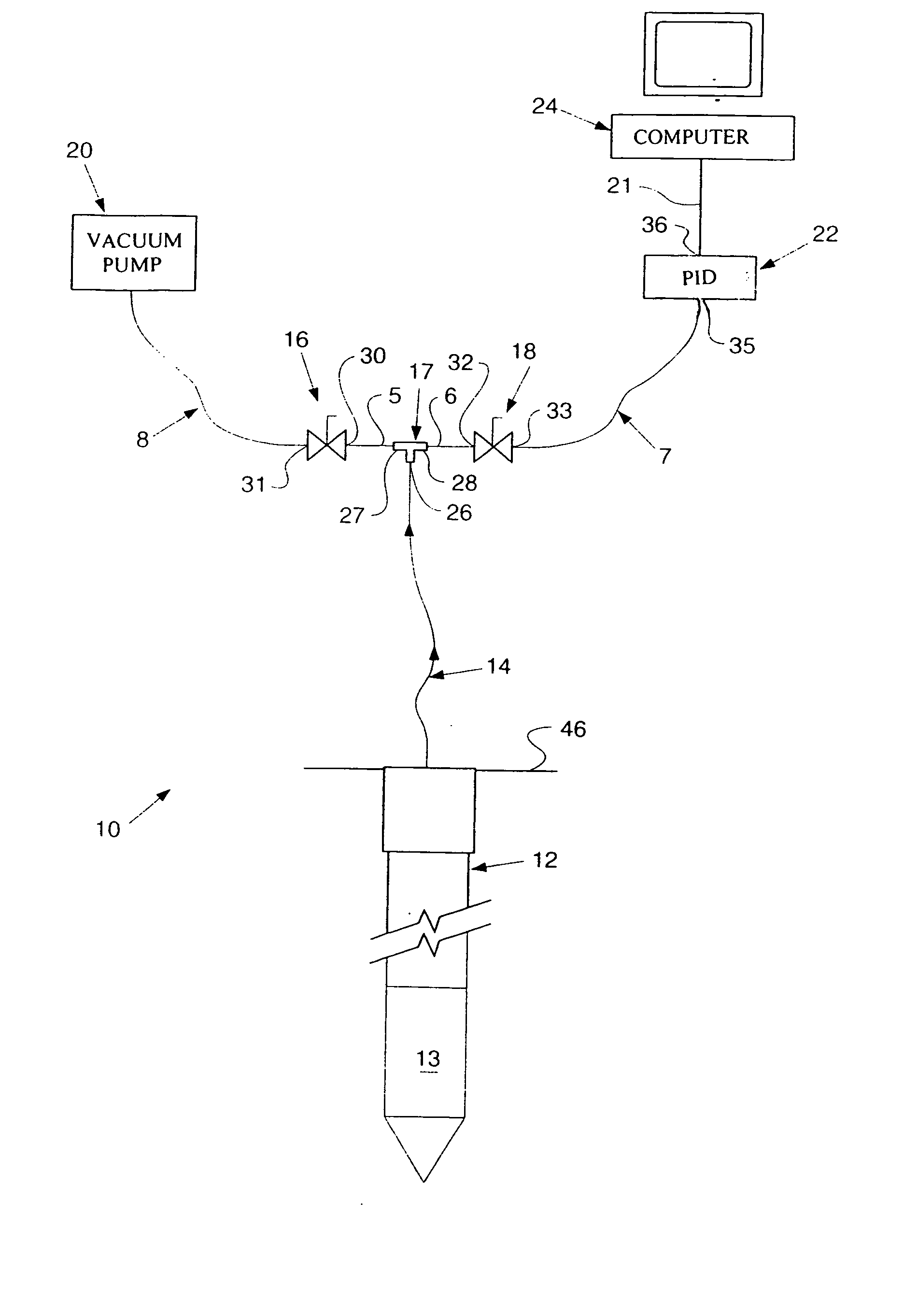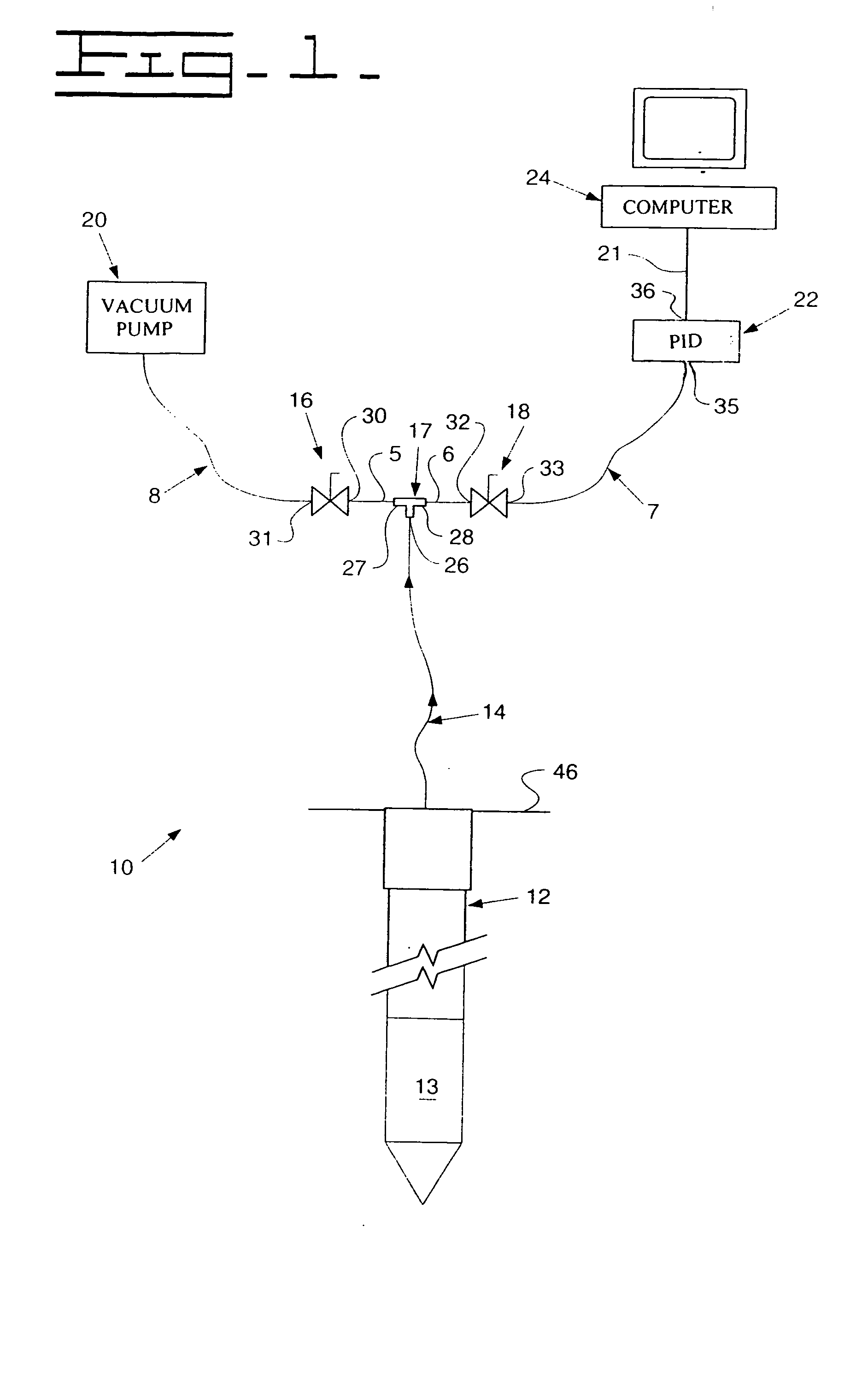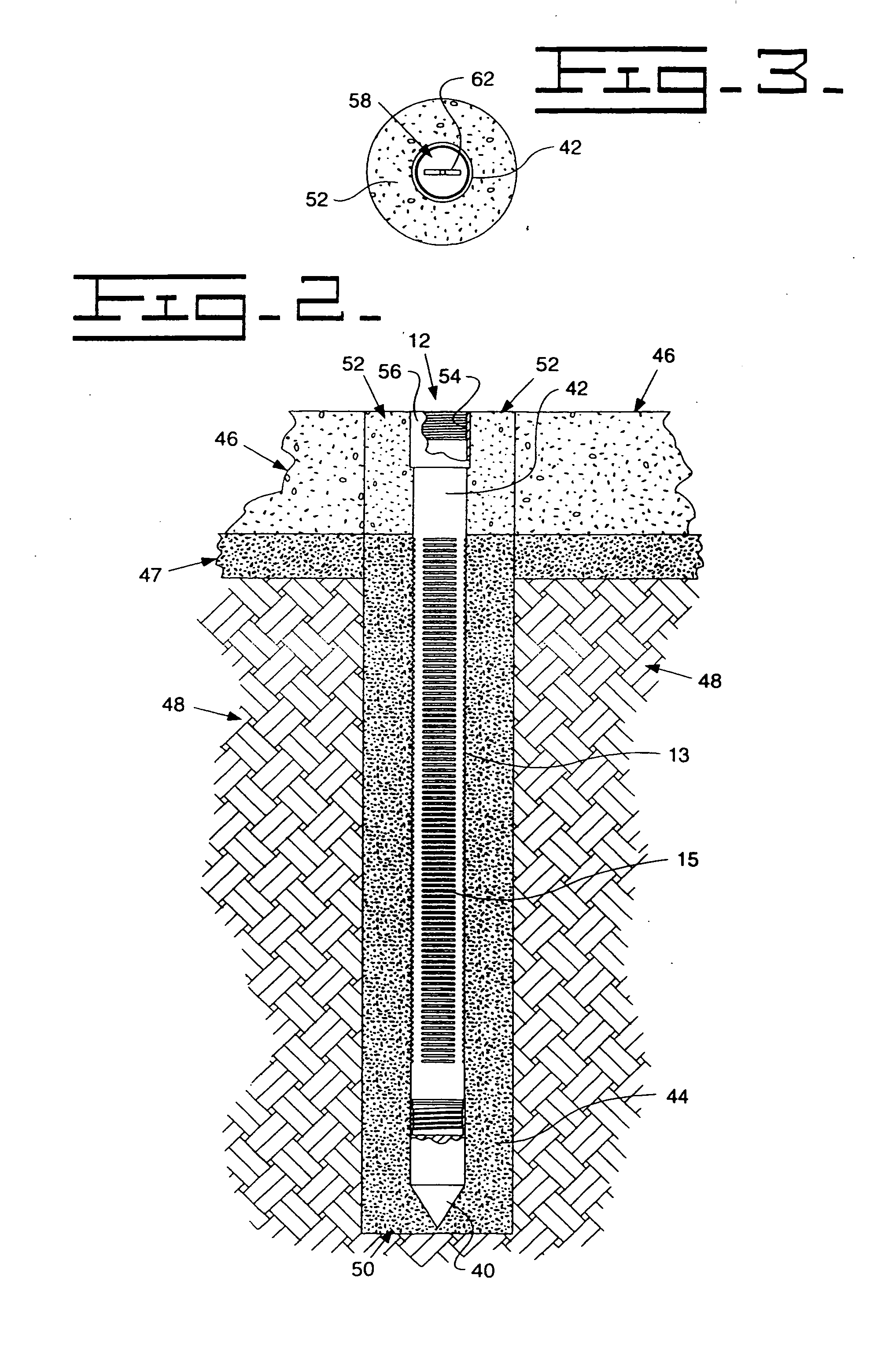Vapor trap system for detecting volatile organic chemical vapors
a technology of chemical vapor and vapor trap, which is applied in the field of gas detection, can solve the problems of accumulating perc vapors not having sufficient pressure to migrate back, evaporation and diffusion, and difficulty in detection, so as to prevent electrical overload situations, and reduce the risk of electrical overload
- Summary
- Abstract
- Description
- Claims
- Application Information
AI Technical Summary
Benefits of technology
Problems solved by technology
Method used
Image
Examples
Embodiment Construction
[0035] In the following detailed description numerous specific details are set forth in order to provide a thorough understanding of the invention. However, it will be understood by those skilled in the art that the present invention may be practiced without these specific details. In other instances, well-known methods, procedures, and components have not been described in detail so as not to obscure the present invention. For example, the invention is not limited in scope to the particular type of industry application, e.g., dry cleaning.
[0036] Referring now to the drawings, and initially to FIG. 1, where FIG. 1 is a vapor trap detection system of the present invention, which is generally indicated by numeral 10. This vapor trap detection system 10 of the present invention provides an early warning capability against unknown spills, leaks or other releases of volatile organic compounds (“VOCs”) that have somehow reached the ground's shallow subsurface. This particularly includes ...
PUM
| Property | Measurement | Unit |
|---|---|---|
| outer diameter | aaaaa | aaaaa |
| distances | aaaaa | aaaaa |
| distance | aaaaa | aaaaa |
Abstract
Description
Claims
Application Information
 Login to View More
Login to View More - R&D
- Intellectual Property
- Life Sciences
- Materials
- Tech Scout
- Unparalleled Data Quality
- Higher Quality Content
- 60% Fewer Hallucinations
Browse by: Latest US Patents, China's latest patents, Technical Efficacy Thesaurus, Application Domain, Technology Topic, Popular Technical Reports.
© 2025 PatSnap. All rights reserved.Legal|Privacy policy|Modern Slavery Act Transparency Statement|Sitemap|About US| Contact US: help@patsnap.com



